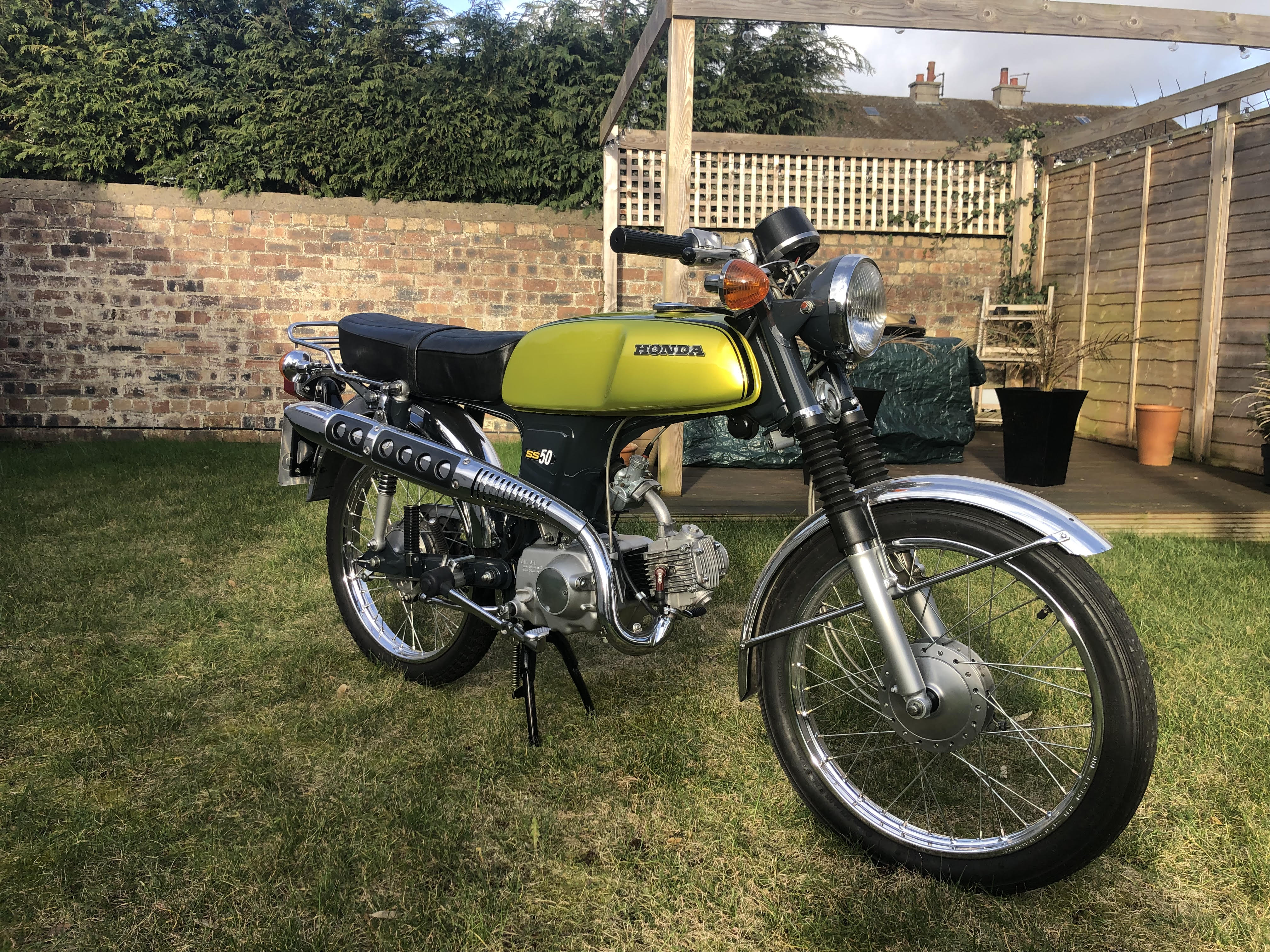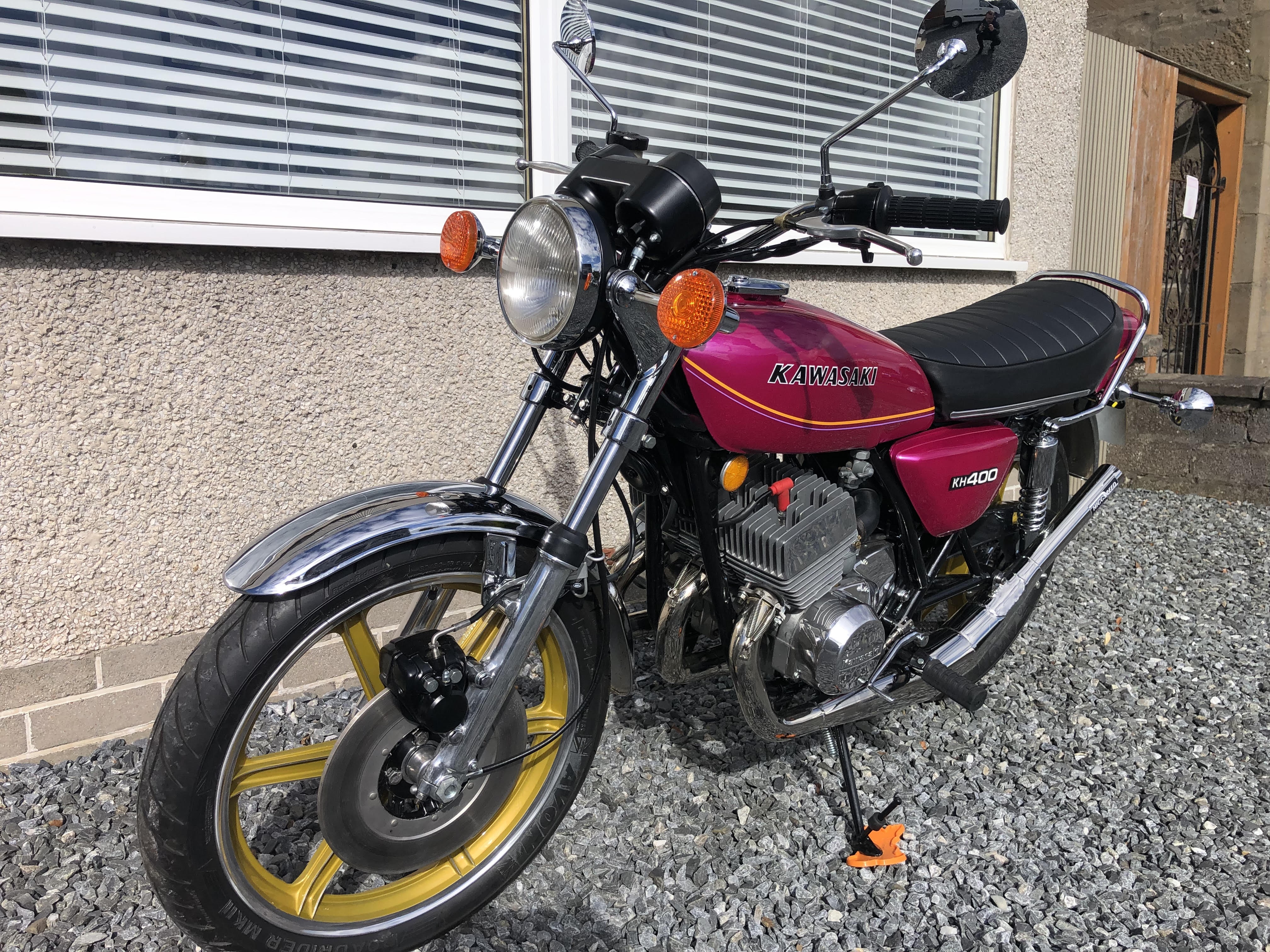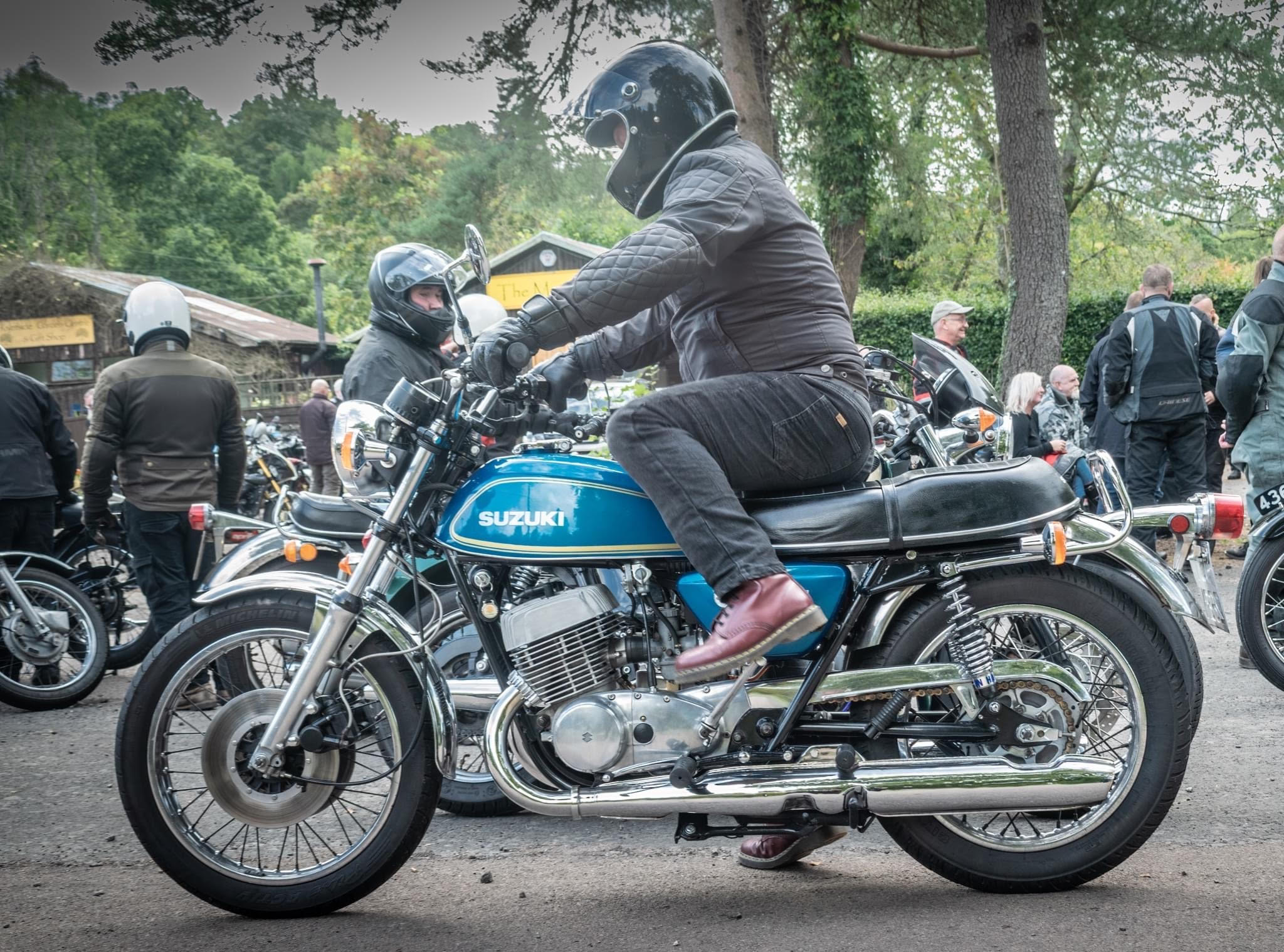Give somebody a grin - with an earful of two stroke
While much of the chatter amongst classic biking circles is about how younger riders of modern machines can be converted to classic bike ownership and riding, for 30-year-old Scott Linford it might be the other way round: can he ever be converted to modern bikes...?
Scott, an electrician from Dundee, has eight modern classics and one old one, and the answer to that question is "extremely unlikely" because Scott has been riding and restoring modern classics for nearly two-thirds of his life. Two thirds...
His first bike was a 1970s Suzuki TS125 trail bike; to get on it he had to stand on an upturned bucket before setting off on rides on fields and private land. Then two years later in 2008 at age 14 he acquired a 1975 Honda SS50.

"I wanted to have something that would be ready to ride when I was 16 - but it really wasn't in very good condition when I got it. I spent two years re-building it to concours condition," he said.

His newest acquisition is a Kawasaki KH400, one of those bikes that bridges the gap between classic and modern in that it has modern-day performance and configuration of controls, but also immense character - a prime attraction of modern classics in Scott's mind.
"It's the first time I've spent £8,000 on a bike. That's a lot of money, but I had it in bits because I wanted to make it as good as I can - but now it's on the road," says Scott, a member of the Vintage Japanese Motorcycle Club.
Because it's a two-stroke, he said, it has a completely different personality from modern bikes: the way the power is delivered in a rush, the smell, and, of course, the noise: three-cylinder two-strokes at full chat are renowned for their spine-tingling sound track.
"It's a 1980 registration; it must be a late one. I've got it on the road, but never had the carbs on and off a bike so often. It's either too rich or too lean, so lots of jetting changes and different needle positions.
"But the noise from the Higgspeeds (expansion chamber exhausts) makes up for it: just awesome."
That's another clue about the potential attraction of classics over moderns for younger riders: they're relatively simple to fix and maintain, with most parts bolting or screwing on or off, with little if any mysterious electronics, and none demanding the plugging in of a laptop to fix glitches.
Try removing the carbs of a modern equivalent, and, well, the first thing you'll find is there aren't any carbs: it's usually electronic fuel injection, and that usually means tracking down or fixing gremlins in the fuel system requires expensive tech.
Anybody who's tackled a 1970s or '80s fuelling problem knows that carb removal can take minutes, dismantling minutes more, and cleaning and servicing not much longer, and all with a limited armoury of spanners and screwdrivers.
The modern classic experience is something Scott is bursting to share, and rides his bikes - which include two 1975 Honda SS50 sports mopeds, a 1970 Yamaha YDS7, 1975 Suzuki T500, 1985 Suzuki TS250X and 1959 Matchless - alongside friends on current era bikes.

"My regular rides are the YDS7 - on which I've done the North Coast 500 - and the T500, which is a great relaxed bike for a long ride. They're both two strokes, which you simply don't see these days, and draw a lot of attention. I'll tell anyone who'll listen just how much fun they are."
At least one of the Scottish sections of the Vintage Motor Cycle Club holds occasional events at which members allow owners of more modern machines to take out a one-day membership to experience riding a classic - carefully scrutinised and on private roads - something which Scott believes would be effective in attracting more bikers to classic ownership.
"From what I've heard, there's a lot of big grins after those first rides on a classic. I think if we could somehow put younger riders on modern classic Japanese two-strokes we'd see a lot of grins amongst that generation who'll find out just how much fun they are," said Scott.
"I have to say that most of the guys I ride out with are in their 50s or 60s, with very few young folk involved. People my age are also not that interested in the mechanical side of things - they can barely change a wheel. People need the chance to experience old vehicles."
He's trying to do his bit amongst his friends, but with four wheels at the moment.
"I possess some modern tech, but I don't have a modern car - I have a 1966 Hillman Minx. I let my friends drive it, and they always come back with a grin."
As a fraternity, classic bikers - particularly those with era-crossover bikes, such as '70s and '80s Japanese bikes - should provide every opportunity they can for younger-generation riders to be exposed to the fun they can put into motorcycling, he says.
And let's not forget, as the years move forward more and more Japanese bikes become modern classics: Scott cites the likes of the Honda 250 Superdream. What was £500 four years ago is now costing £1,500 to buy.
So choose carefully and you could land a bike which is fun to ride, easy to maintain, cheap to insure - and just by being looked after and progressively restored could well see its value rise.
And all the better if it's giving a new-to-classics rider a grin as wide as his or her visor.
Article written by automotive journalist, Iain Macauley.
At Footman James we’ve been providing classic bike insurance to riders for almost 40 years. You can insure up to 5 bikes online and customise your policy to suit you with FJ+. For more information please see here.

COMMENT